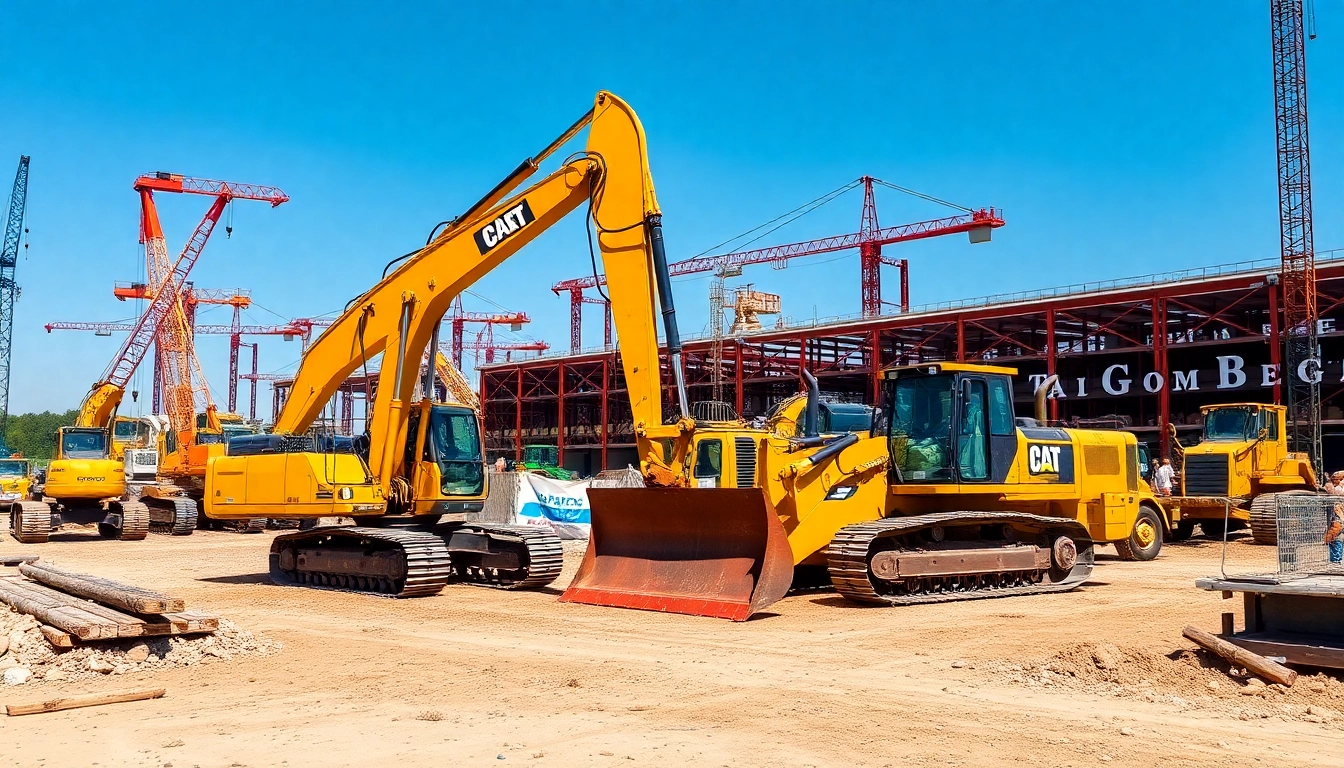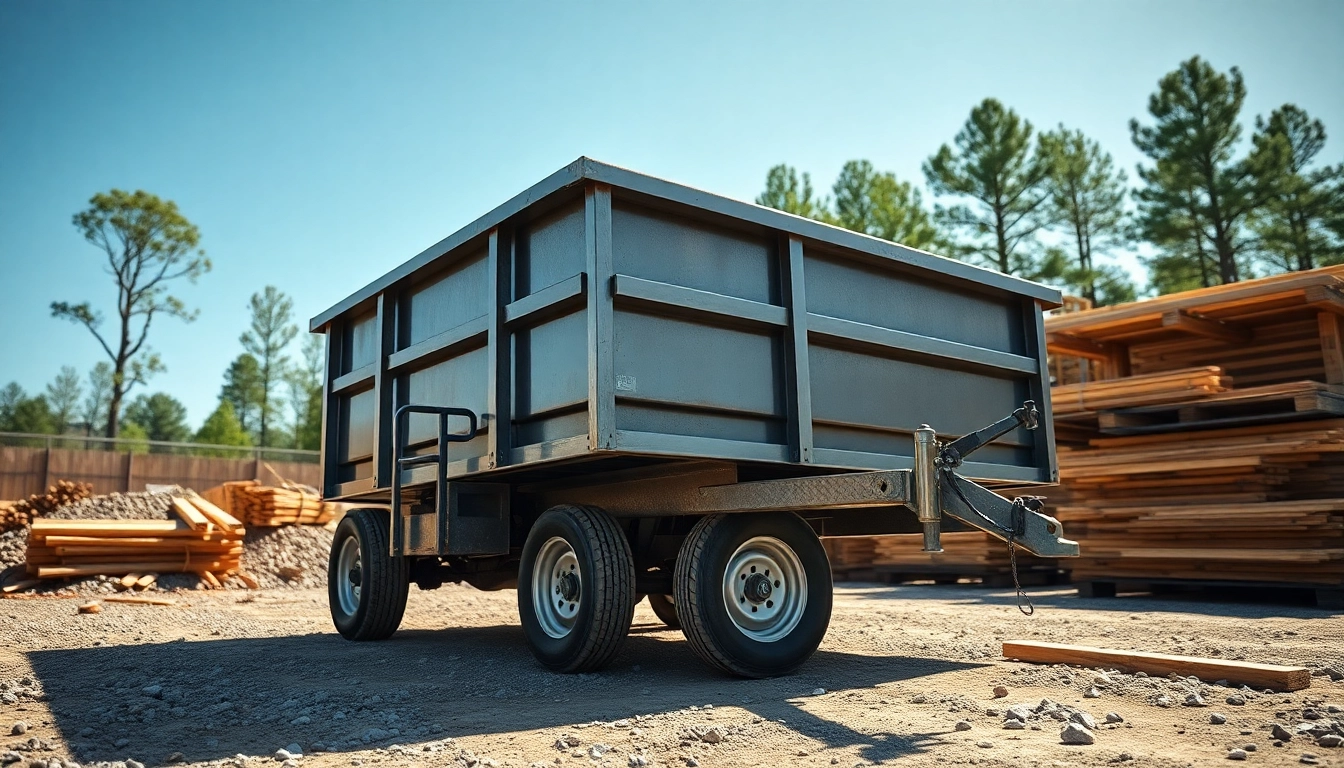Understanding Heavy Equipment Financing Loans
Heavy equipment financing loans are vital for businesses across various industries, particularly in construction, agriculture, and manufacturing. Securing financial backing for substantial equipment purchases can significantly enhance efficiency and productivity. The right financing option can ease the burden of upfront capital expenditures and help businesses thrive. For an in-depth look into how to procure the necessary funding for your heavy machinery, consider exploring Heavy Equipment Financing Loan solutions.
What is Heavy Equipment Financing?
Heavy equipment financing is a form of loan or lease specifically designed to help businesses acquire heavy machinery essential for their operations. These loans are structured to facilitate the purchase or leasing of equipment like excavators, bulldozers, and other heavy machinery. Typically, the equipment itself serves as collateral, reducing the lender’s risk and often enabling borrowing terms that might not be available with unsecured loans.
Advantages of Financing Heavy Equipment
Choosing to finance heavy equipment rather than purchasing it outright comes with several advantages. Here are some key benefits:
- Preservation of Capital: Financing allows businesses to use their capital for other operational needs, such as hiring more staff or marketing.
- Flexible Repayment Options: Most financing solutions provide various repayment plans that can align with a business’s cash flow, seasonality, or project timelines.
- Tax Benefits: Certain financing payments may be tax-deductible, enabling businesses to reduce their overall tax burden.
- Up-to-date Equipment: Financing can boost businesses’ ability to acquire the latest equipment without significant upfront costs, allowing them to stay competitive.
Key Terms and Conditions to Consider
When considering heavy equipment financing, it’s crucial to understand the associated terms and conditions. Important elements to review include:
- Interest Rates: The rate can vary based on creditworthiness, the lender, and the market conditions.
- Loan Terms: Duration of the loan, typically ranging from 1 to 7 years, can affect monthly payments.
- Down Payment: Some lenders may require a down payment, which could influence the total amount financed.
- Collateral Requirements: Since machinery often serves as collateral, understanding how lenders assess this collateral is key.
Types of Heavy Equipment Financing Loans
Traditional Bank Loans for Heavy Equipment
Traditional loans from banks are a common method for obtaining finance for heavy equipment. Typically, these loans offer competitive interest rates and predictable repayment schedules. However, traditional lenders often have stringent qualification criteria requiring good credit scores, substantial documentation, and sometimes a significant down payment.
Leasing vs. Buying: Which is Right for You?
Deciding whether to lease or buy heavy equipment can significantly impact a business’s finances. Here’s a brief overview of each option:
- Leasing: Leasing can reduce upfront costs and offers the flexibility to upgrade equipment as technology evolves. However, at the end of the lease term, the equipment does not belong to the business, and there may be restrictions on usage.
- Buying: Purchasing equipment is a more substantial initial investment but grants full ownership. This can lead to tax deductions through depreciation and asset accumulation on the balance sheet.
Alternative Lenders and Fintech Options
With the rise of fintech, alternative lenders have become an attractive option for financing heavy equipment. These lenders often offer faster approvals, more flexible terms, and less rigid qualification requirements compared to traditional banks. Online platforms can streamline the application process and provide immediate access to funds, which is beneficial for businesses facing urgent equipment needs.
Qualifying for a Heavy Equipment Financing Loan
Credit Score Requirements
Credit scores play an essential role in determining eligibility for heavy equipment financing. Most lenders prefer borrowers with credit scores above 650, but some may approve loans for applicants with lower scores, as the equipment serves as collateral. Understanding your credit situation and addressing any issues prior to applying can improve qualification chances and secure better rates.
Documentation Necessary for Application
Preparing documentation in advance can expedite the application process. Typically required documentation includes:
- Personal and business tax returns
- Financial statements (profit and loss statements)
- Business plan, particularly for startups
- Quotes from equipment dealers
Common Pitfalls and How to Avoid Them
Many businesses encounter challenges when applying for heavy equipment financing. Here are some common pitfalls to be aware of:
- Lack of Preparation: Ensure all documents are complete and accurate. Incomplete submissions can delay the approval process.
- Ignoring the Fine Print: Understand all terms and conditions before signing. Look out for fees, interest rates, and penalties for early repayment.
- Neglecting to Shop Around: Investigate multiple lenders to compare rates, terms, and customer service.
Maximizing Your Investment: Best Practices
Choosing the Right Equipment for Your Business
Selecting the right heavy equipment is critical for maximizing ROI. Businesses should assess their specific needs, consider the types of projects they will undertake, and conduct thorough market research on available options. Evaluating the total cost of ownership versus the upfront purchase price can lead to better long-term results.
Managing Loan Payments and Cash Flow
Effective cash flow management is essential for accommodating heavy equipment loan payments. Here are strategies to consider:
- Budgeting: Create detailed budgets that account for the loan payments alongside other operational costs.
- Forecasting: Anticipate revenue cycles related to seasonal or project-based income.
- Establishing a Reserve: Build a cash reserve to cover unforeseen expenses or fluctuations in revenue.
Maintenance Considerations for Long-term Success
Proper maintenance of heavy equipment is vital for longevity and performance. Regular servicing and maintenance schedules should be established to prevent downtime or significant repairs. Tracking usage data can help identify potential issues before they escalate, ensuring smooth operations and protecting your investment.
Future Outlook and Trends in Heavy Equipment Financing
Emerging Technology in Financing
As technology evolves, the landscape for heavy equipment financing is also changing. Innovations like artificial intelligence and machine learning are being leveraged by lenders to streamline approval processes and offer customized financing solutions. Additionally, blockchain technology may enhance security and transparency in transactions, benefiting both lenders and borrowers.
Market Trends Affecting Heavy Equipment Financing
Current market trends indicate a rising demand for financing options as industries expand and recover from economic downturns. Increased infrastructure spending and technological advancements are driving this growth, leading to a more competitive financing environment. Keeping abreast of market shifts is crucial for businesses looking to make informed financing decisions.
Preparing for Changes in the Industry Landscape
Businesses should proactively anticipate changes in the heavy equipment financing landscape. These can include alterations in economic conditions, shifts in regulatory environments, and advancements in financing technologies. Staying informed and agile can safeguard against risks and position organizations to capitalize on new opportunities as they arise.














Leave a Reply